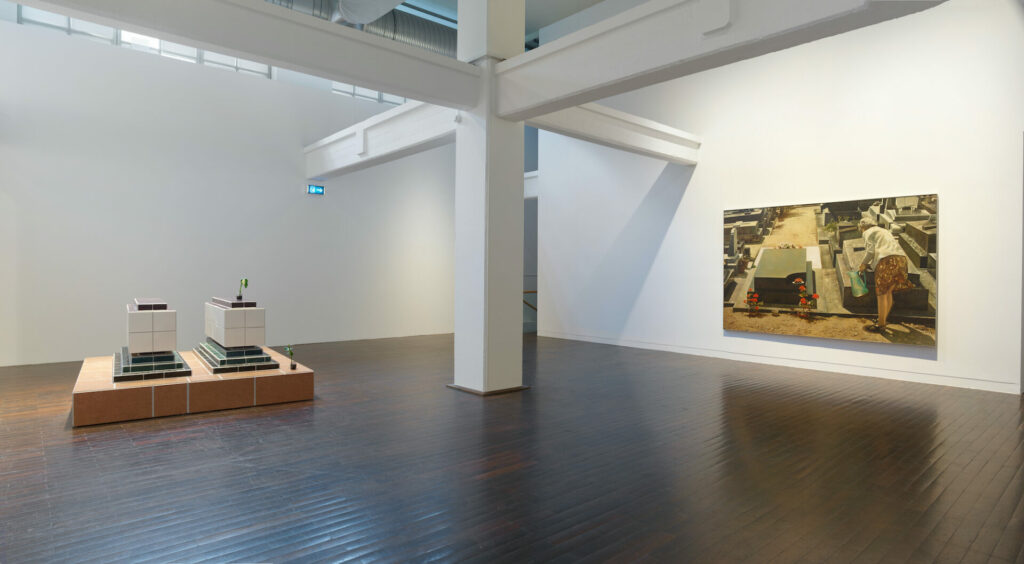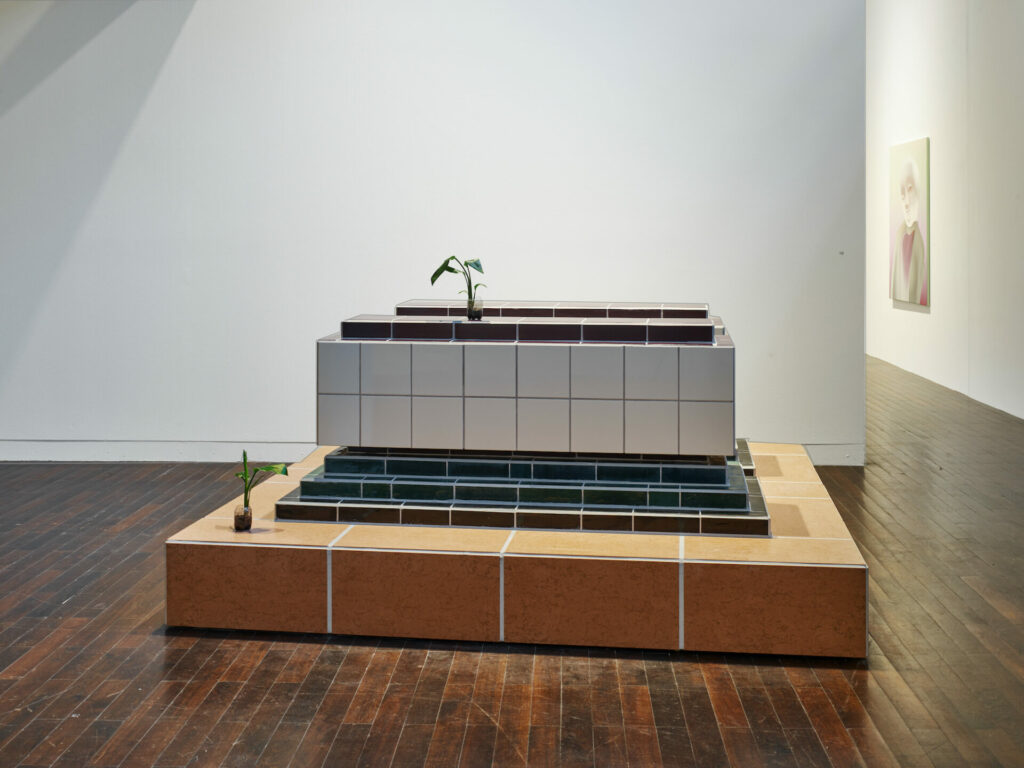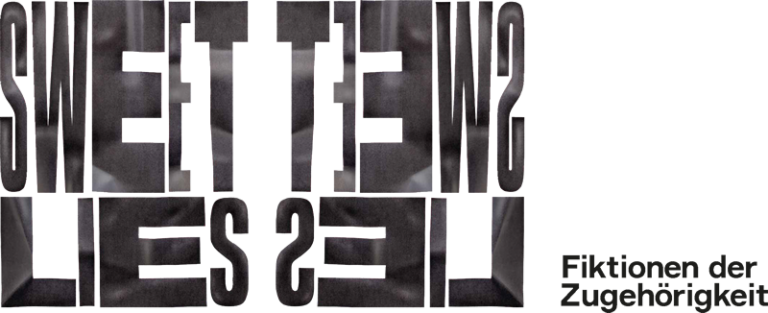Jean-Olivier Hucleux
* 1923 in Chauny, France
† 2012 in Paris, France

Jean-Olivier Hucleux made his first attempts at painting shortly after the end of the Second World War, but stopped again just a few months later and from then on worked as a photo retoucher, among other things. It was not until 1968 that he decided to devote himself to art again. Since then, he has worked specifically with photographs, which have always served as models for his paintings. Among his first series is Cimetières, created from 1971. The Cimetières, with which the artist was represented at documenta 5 in 1972 in the Realism section, signified his international breakthrough. Since then he has been one of the most important representatives of French Photorealism. Cimetières N° 5 is part of his Cemeteries series and became part of the Ludwig Collection at an early stage.
At first glance, the painting appears to be a hyper-realistic snapshot, almost life-size on the picture support. It shows the cemetery of Andrésy, a small community about 30 kilometers northwest of Paris, on a sunny day. In the foreground is an elderly woman bent slightly forward with a beaked zinc jug in her left hand, while her right is propped up on or cleaning the grave slab. Strikingly, the graves, separated only by narrow paths, appear to be arranged according to a geometric grid, typical of the structure of French cemeteries. At first glance, the detailed painting looks like a photograph. Only on closer inspection does it become clear that Hucleux deliberately distorts the Perspective with its vanishing point. Likewise, he plays with sharpness and blurriness, which come to light in equal measure. If you look at the shadows, you can see that the drop shadows do not follow the same position of the sun. Hucleux shows a scene that at first seems familiar, but only on closer inspection raises formal questions and thus breaks with the peaceful silence of the cemetery. With the help of this artistic intervention during the transfer of the motif into the medium of painting, it becomes clear that the artist is not only concerned with hyperrealistic depictions of a scene. Rather, he problematizes the limits of representability and, through the targeted use of disruptive factors, questions the imitation of color, form, figure, and perspective – in other words, everything that makes up classical painting and our perspective on the world.
Moreover, Cimetières N° 5 fascinates by its neutrality, which comes close to a sociological observation. Even if the layout of the rows of graves is related to those in cemeteries in Germany, the graves with their stone slabs are designed differently. The graves, which are very close to each other, are separated only by narrow gravel paths. It is striking that all graves are similar in their three-part construction: On a foundation plate rests a substructure, which carries the final grave slab. In some cases a gravestone is placed on top of it, both are made of marble or granite. In most cases fresh flower arrangements seem to be omitted. These observations apply to most of the graves depicted with one exception: the grave in the foreground of the left half of the picture. In two pots, slightly embedded in the ground and placed in front of the grave, are red geraniums. Behind them one can see a flower arrangement of White roses, apparently only a few days old.
in dialogue with

Phung-Tien Phan
XO (Bankettgruppe 0), 2021
